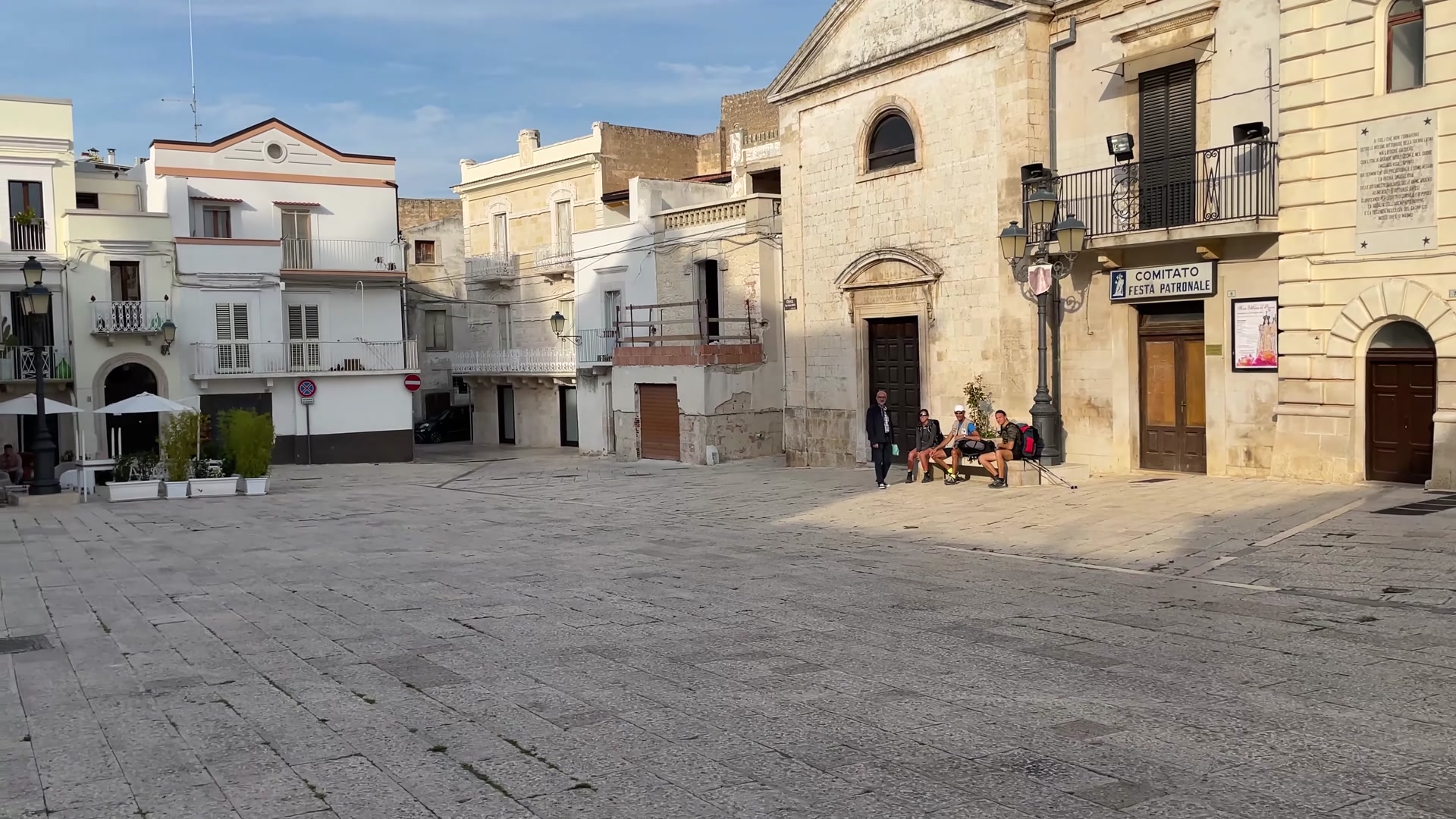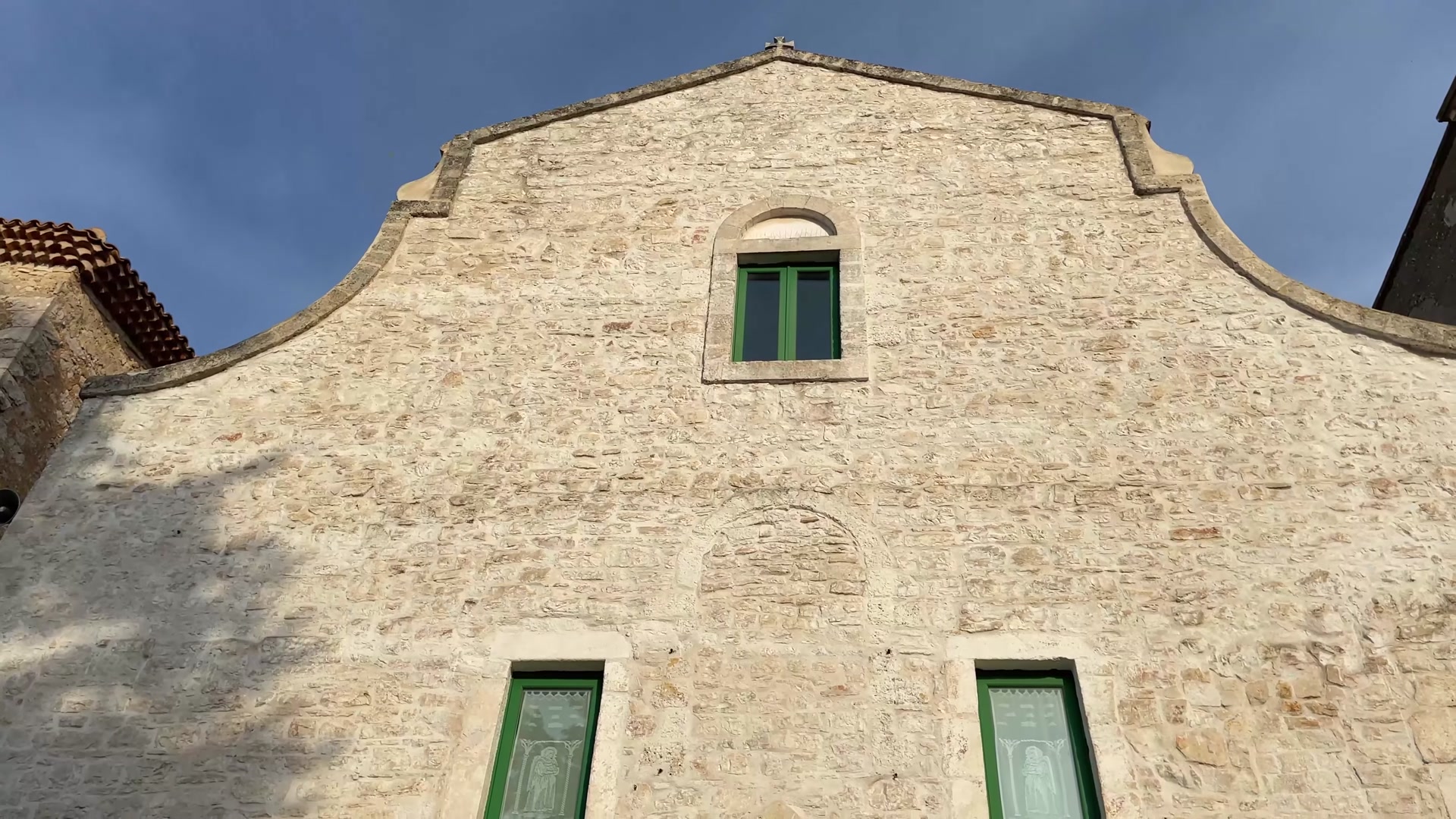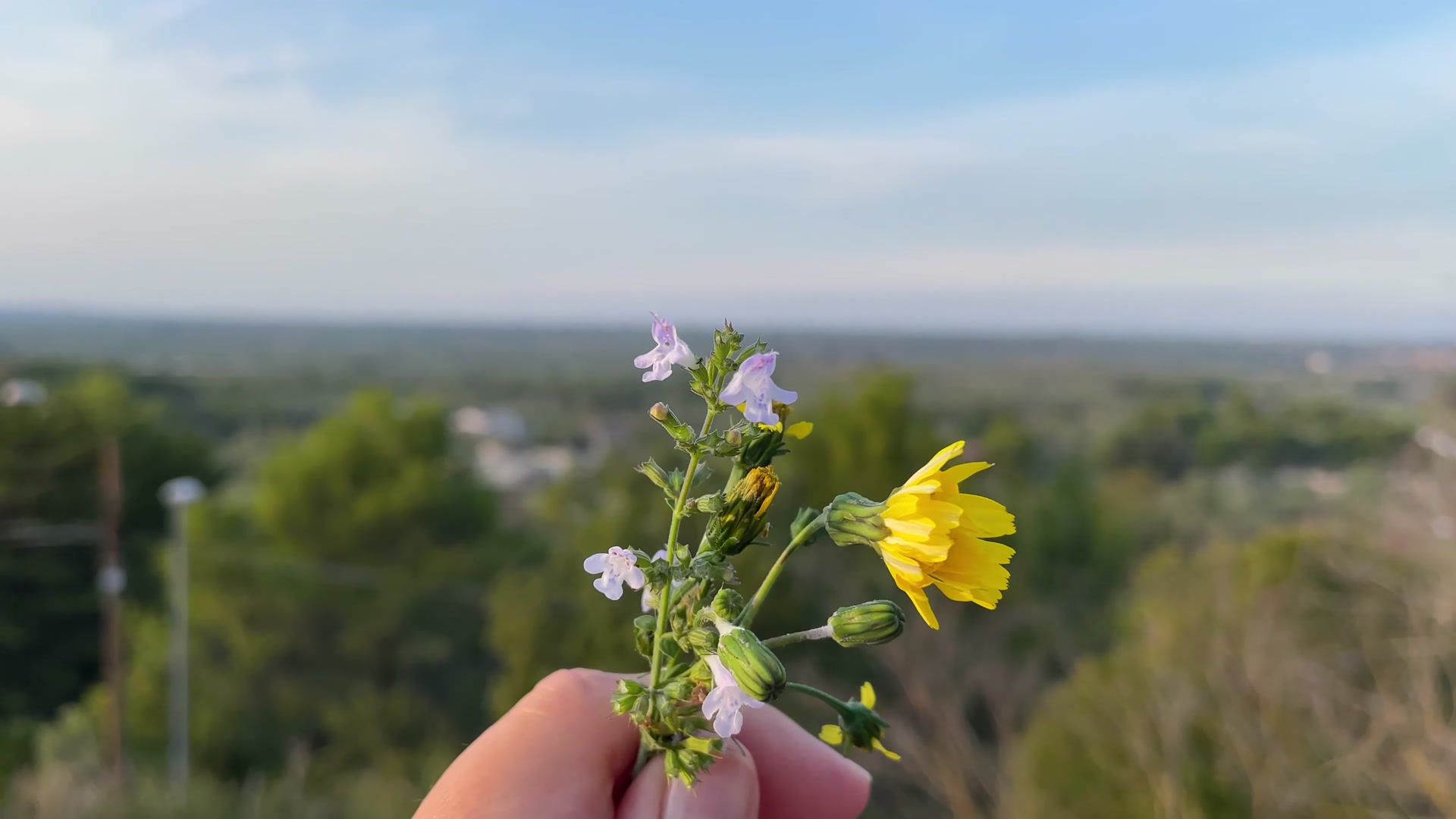
Hello my friends. 😍 Cassano delle Murge is an Italian town with a population of about 14.000 people, located in the Puglia region, near the city of Bari. During our visit there, we strolled through the old town visited the Santa Maria Monastery and Sanctuary, explored the Mercadante forest and tasted local dishes. My little niece accompanied me on this trip and we had a very delightful day together.

This town is particularly famous for its artificial forest, created in 1928 to preserve the geological balance of the Murge Plateau. The town’s patron saint is Santa Maria degli Angeli, whose feast is celebrated annually from August 1st to 4th at a shrine located in a natural cave. There is also a cave church here.

During the Patron Saint's day celebrations, the town is adorned with beautiful illuminations typical of Apulia. These designs consist of intricate openwork patterns made with lightbulbs, creating stunning displays. They look magnificent. And the festivities include orchestra performances, fireworks and a religious procession. On the evening of August 2nd the statue of Madonna degli Angeli is carried on a decorated triumphal chariot. The statue is taken out of the shrine and paraded through the town's streets. All church associations, civil and military authorities, locals and tourists participate in this event, which is a highly impressive and beautiful procession.

I really enjoy such events. I often watch parades and religious processions with various costumes. These kinds of things fascinate me. When the Cassano procession reaches Piazza Garibaldi, the mayor ceremonially hands over the town's keys to the statue of the patron saint.

On these festive days thousands of tourists usually come to the town. The historic center of Cassano delle Murge is a network of streets featuring old buildings, arches, small windows, staircases and passageways paved with white stone that serves as both a protective layer for houses and as sidewalks and roads. The streets slope up and down. Some old houses made of local stone have been restored and rebuilt. However, you can still feel the medieval atmosphere and authentic vibe on almost every street of the old town. If you visit, I think you’ll like it.

This is actually a small town. But many people come here to go for walks. While walking in the old town is pleasant, the main attraction is of course, the forest. The Mercadante forest in the town makes it a health center. The forest is renowned for its healing air. According to some sources, the town's name is derived from the Latin name Cassius. Others believe the name refers to the ancient cult of the god Janus, as a small temple dedicated to him, the House of Janus, was once located here. For this reason, the town’s name might have been Casa Jani. However, most scholars agree that the name comes from Cassius.

Cassano is located along the road connecting two ancient trade routes, the Via Traiana and the Via Appia. Perhaps this place once served as a resting stop. Recently, a Roman mosaic was discovered beneath Palazzo Miani. In ancient times, the most important buildings were often constructed near significant crossroads and it’s believed that there was a Roman villa in this area.

There are seven cities in Italy named Cassano. To distinguish this one from the others, the name delle Murge was added in 1862, signifying that this Cassano is located in the Murgia Plateau of the Apulia region.








We walked through the Old Town and then headed to a monastery and sanctuary. The streets of Cassano were almost empty, mainly because we decided to take our walk right after Sunday lunch. Between 1 pm and 5 pm, Italian streets are usually deserted. Everyone retreats to their homes, enjoys lunch, rests and cleans up afterward. It’s a tradition here and it’s widely accepted.






In the caves surrounding Cassano delle Murge, hundreds of stone tools, drawings and various objects have been discovered, indicating human presence in the area since prehistoric times. Recently a menhir was found near Cassano delle Murge, which is estimated to date back to 2000–2500 bc.



Beyond the Patron Saint’s Day, Cassano delle Murge also hosts various festive fairs called sagra or festa. The schedules for these events, as well as Patron Saint Days across Italy, are always available online. So when planning a trip to Apulia or another region in Italy, you can research these programs in advance and organize your visits around them. If you happen to be there during a sagra, your experience will be even more memorable. Not only will you see the town, but you’ll also witness how such events are held. These are always highly authentic, featuring local food stalls orchestras and various activities. In short an unforgettable experience is guaranteed.


One of the most interesting places in Cassano delle Murge is the Santa Maria Monastery and Sanctuary. It’s a church with an altar inside a cave. From the square in front of the shrine, you can enjoy breathtaking views of the Murgia Valley that will leave you spellbound. Standing there, you just want to stop and take it all in.

The church here is quite old. In 1250 the first altar for worship was built in a cave, following a vision of the Madonna degli Angeli appearing on a rock to a nun. This vision was depicted by Basilian monks. On May 29. 1469, Pope Paul II granted permission to build a monastery here. Today the site features a monastery complex managed by Augustinian monks.

This complex includes a monastery, a shrine (santuario) and a cave containing an icon of the Virgin Mary. We visited the church, explored its interior and descended into the cave to see the natural altar. The cave thousands of years old, houses an altar within.







After strolling through the city and visiting the sanctuary, we headed to the Mercadante forest, a popular spot for relaxation. Covering 1.300 hectares, most of the forest lies within Cassano delle Murge, with the rest in Altamura. The forest is an integral part of the Alta Murgia National Park.

Interestingly this forest is artificial. Following extensive deforestation in the 19th century, environmental damage became apparent, even in Bari. The city experienced three major floods. In 1905, 1915 and November 6. 1926. The last flood destroyed all specially constructed retaining walls, necessitating serious intervention to control water flow during heavy rains.

In response vast areas, including the Mercadante estate, were nationalized by royal decree and reforestation efforts began. The forest takes its name from Giuseppe Mininni, the estate’s owner.

Locals and tourists love visiting this forest for relaxation. It features playgrounds, recreational areas, picnic spots, a restaurant and stalls selling various goods. There’s even a farm with poultry and pets. The forest’s microclimate is delightful: cooler than Bari due to its higher altitude, making it a refreshing retreat during summer heat.
Agriculture has always been the main livelihood in Cassano delle Murge, with large-scale almond, olive and grape production. Recently the processing of these products has developed significantly, leading to excellent wines and oils. Local dairy products and cheeses are also a highlight.
In the forest we came across an interesting stall selling local cheeses. Initially I thought they were selling cakes and sweets, but they turned out to be cheeses.

What local dishes can you try here? Some examples include lamb chops with onions on skewers (carnochi pod), grilled goat or lamb and various sausages made from a mix of beef and lamb. Another specialty is lamb or goat meat rolls wrapped with parsley and grilled.
Since Cassano is inland, seafood and fish are not as common. Instead meat is the main focus, accompanied by local pasta varieties like orecchiette and cavatelli. A typical dish to try is fava bean and chicory puree. Legume and herb-based dishes are very popular here. For example, they make fava puree served with chicory or Swiss chard.
Other specialties include baked eggplant dishes, roast poultry with tomatoes and olives and omelets with wild asparagus.

I enjoyed Mercadante forest. Some people mentioned that horseback riding was available, but since we arrived late in the evening (around sunset), we didn’t see any horses. So I can’t confirm. However, we explored various playgrounds, although one seemed under repair as it was fenced off.

This concludes our walk through this charming Italian countryside. I hope you enjoy these journeys. If so, please let me know in the comments. Sometimes I notice that trips to lesser-known small towns don’t get as much attention as visits to famous places. Yet, I love exploring different towns in Italy, especially in Apulia and I thoroughly enjoy being here.




I hope I’ve managed to convey the atmosphere I experienced to you. Thank you for reading. Sending hugs and kisses to all of you. Wishing you love, prosperity and peace. See you soon.